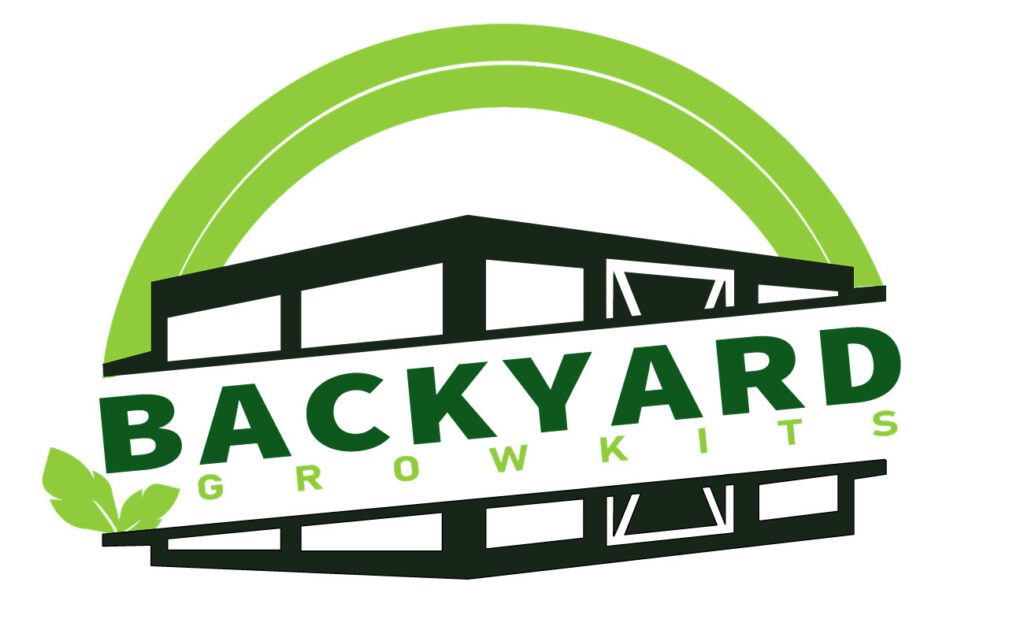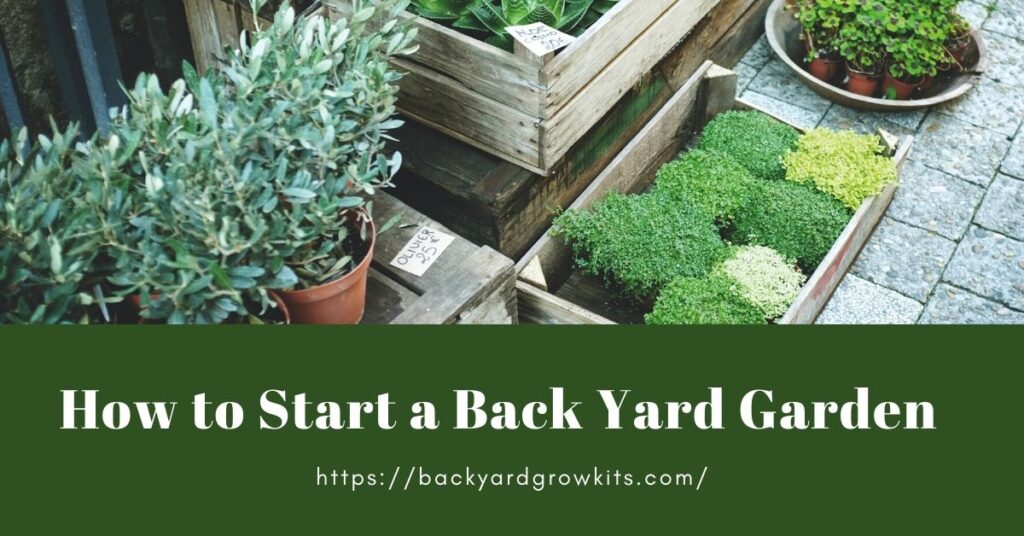You don’t need a degree or experience to start a backyard garden.
Gardening, especially in your backyard, is a gratifying experience and is meant to relieve stress and not cause it.
For a gardener, nothing beats the feeling of sitting on a porch while sipping a cup of coffee as you dazzle at the beauty of your backyard garden. Finally, all the effort and time paid off.
Forgive my love for gardening but, hey, with just the right tools, knowledge, and of course, your imagination, you can turn your backyard into a plant sanctuary.
But I am not creative. I have never even done anything like this before. Well, worry not. This article gives you insight and awakens that gardener in you.
We’ll break down the gardening process into manageable steps you can follow
You can call it your step-by-step guide on How to Start a Backyard Garden.
Let’s dive in.
1. Know your climate zone
As the saying goes, knowledge is power.
Knowing your climate zone saves you the hustle of growing your favorite crop in the wrong climate zone, only to waste your time and energy.
Take power in your hands, find out the climate zone in your area, and what plants flourish there.
Estimate the first and last frost dates so that you can determine the duration of your growing season. Then, with the growing period at the tip of your hands, confidently buy seeds by comparing the days your seeds take to mature as per the seed packet to the length of your growing season.
2. Determine what you want to grow
The rule of thumb is to grow plants that flourish in your climate zone.
It is rewarding to grow vegetables or herbs that you can consume with your family.
Like honestly, why would you grow a plant you won’t consume? So instead, focus on vegetables, fruits, and herbs that are your family’s favorite.
Flowers, though, are an exception. Their color, flair, and fragrance add life to your garden.
In case your backyard has limited space, avoid large plants.
3. Establish a suitable location
Choose places in your backyard where crops have adequate access to sunlight.
Fruits and vegetables like tomatoes need at least 5 hours of sunlight in a day, especially for Northern gardens.
Southern gardens, however, can do well with the afternoon shade. In addition, greens, herbs, and root vegetables need partial shade.
Consider a relatively flat piece of land near a structure to provide wind cover or trees that act as wind brakes.
The place should be easily accessible to monitor and care for the plants. In addition, a water source should be close by should the rain seasons change.
Avoid high wind and frost-prone areas.
4. Test your soil
You need to know the pH levels of your soil to establish the crops that can flourish in that particular pH. Most plants, however, do well in almost neutral pH levels. For example, plants like potatoes do well in acidic pH, and crops like brassicas do well in alkaline soils.

You also test for the soil type to know whether it’s rock, silt, clay, or a mix of all the above. Different crops grow in different soils. You can then establish those that grow well in your soil or improve the quality of your soil to grow the crops you want.
You can use a DIY test to get an idea of the nutrient levels of your soil, or you can obtain results from the lab for accurate details.
You also know if there is a risk of contamination. If the toxins exceed the safe threshold, grow in raised wooden beds with a barrier at the bottom so that roots don’t penetrate to the ground below.
The good thing is you can always get these tests done at your local USDA Cooperative service office for peanuts.
5. Build your soil
Deep, well-drained, fertile soil enriched with organic matter is ideal for every farmer.
The question is, how do you get your thin, rocky, sand, or clay soil to this state?
The first thing to do is send the soil samples to the laboratory to establish what the soil lacks. The local extension office can do this for you.
Use organic fertilizers for plants, animals, and minerals like compost and manure. These bind loose soil particles together, increase the soil’s texture and water retention abilities. They also provide worms and beneficial creatures to the earth necessary for healthy plant growth.
Use fertilizers as per the packet instruction and schedule to solve nutrient deficiencies in your soil and get rid of pest and disease problems.
Healthy, vibrant soil yields healthy, rich plants with inbuilt pest and disease resistance. Who wouldn’t want that

6. Plan your garden beds
Now determine the type and size of your garden bed. Raised beds are appealing and easy to work with though prone to high evaporation rates.
You would consider using sunken bends for dry areas since they contain moisture.
Plant garden in blocks or beds instead of a single row so that you can easily access each part of the garden.
Place plants in rows or grid patterns to minimize walkways maximize growing space. In addition, you can apply fertilizers and soil enhancements to only the growing area, which saves time and money.
Adequately space the seeds or seedlings since they are small at planting but grow into large plants that need space.
Maximize your building skills and imagination to create and efficiently use the available space. For example, you can use rectangular or square beds or even use raised kits like old water tanks and cross-sections of drain pipes.
One important factor I can emphasize in garden beds is vertical gardening.
Growing crops vertically maximize space, creates better air circulation, which lessens disease build-up, especially fungal.
It elevates the plants and limits ground-dwelling insects and pests from accessing them. You have a reliable pest control plan when you add mulch to the equation.
The deciduous vines and tress can be a shelter for your home from the pounding summer sun. Hedges and trellis in the strategic positions shield your home from nosy passersby and can also be a camouflage for a crop you want to grow discretely, like cannabis.
It is also easier to harvest mud-free produce, and you can easily spot damage on the crop, so you don’t mix them.
And who wouldn’t want a beautiful garden? Vertical gardening gives you that.
Finally, building or installing a grow hut is advisable if you grow high-value plants that require security and privacy.
7. Invest in essential garden tools
The right garden tools will make your gardening experience as pleasurable as you anticipated.
Mechanical devices are not recommended, especially for the backyard, since they can interrupt the soil structure. Just use hand tools.
A few commonly used ones include the dirt rake, scuffle hoe, leaf rake, garden shovel, and a garden hoe.
Avoid plastic tools because they degrade the environment. Instead, use metallic tools in suitable sizes to avoid accidents.
Keep tools clean and sharp at all times.
8. Choose the right seeds or seedlings to plant
Some plants are best grown directly as seeds, while others as seedlings.
Seeds are cheap but costly in the long run in case they take a longer time than estimated to sprout.
How do I start with seeds?
It depends on what and where you’re growing. The good thing is that most seed companies label packets with basic growing information. They also have a growing schedule that spreads your planting process over time, so you don’t feel pressured.
For heirloom varieties, grow your transplants from seeds for safety purposes, and it is cost-effective. You can, however, also buy from a local nursery.
How do I spot plants at a nursery?
Check for signs of stress like insect damage or yellow leaves. You can also ask at the store to know if they sprayed the plants with potentially harmful chemicals that could repel pollinators.
Plant your seeds and seedlings with care
Most companies attach instructions to their seed pockets and transplant containers.
Before anything, research adequately so you at least have an idea on how to plant or transplant.
You can even seek help from an experienced farmer for the first time.
For seedlings, carefully transfer the plant from the pot to the soil as per the instructions.
If the earth is bound, free the mats of the roots.
Position the plant appropriately and cover the bases with soil.
Ensure not to cover the stems as this may be a death sentence for the plant
Do’s and don’ts when planting.
Plant seeds to a depth three times their diameter size unless the packaging says otherwise.
Transplant seedlings to approximately the same depth as the pot they came in.
Do not plant heat-loving plants like tomatoes, okra, cucumber, pepper during the frost.
Do not leave young plants outside unprotected from pests, harsh weather conditions since they can quickly get damaged.

9. Maintain and care for your garden
After planting the plants, you don’t just sit back and wait for fruit.
Clear the vegetation and uproot the weed and ensure it does not re-sprout.
For stubborn weed, sheet mulching can work the magic.
You need to pay attention to what the plants tell you and act on them to get the desired yield.
A yellow or deformed leaf is telling you, cut me off.
A plant collapsing under its weight is screaming, stake me, please.
Dense and overgrown vegetation is saying, hey, look at me, I need sunlight and air circulation; please prune me.
Deal with weed when they are still small.
Mulching deliberately keeps the soil warm, moist and increases organic matter since it’s a habitat for worms and other helpful creatures. Mulches, by default, also get rid of weeds.
Watering is essential. The secret to watering is plants need approximately one inch of water per week during the growing season.
First check the water levels before watering because over-watering is as bad as under-watering.
Ensure the plant is healthy and well-nourished, so it does not attract bugs. You can use foliar feeds like compost tea for extra nutrients and beneficial microbes.
Always opt for organic solutions so that you can harvest produce free from chemical additives.
10. Reap your harvest
Harvest the plants promptly as they mature to eliminate issues of harvesting plants that are immature or overgrown to almost stale.
An abundant harvest shouldn’t be a problem.
You can store your vegetables fresh in the refrigerator instead of leaving them to rot in your garden.
Parting Thoughts on How to Start a Back Yard Garden
Gardening in your backyard is farming on a small scale done by people who want to engage with their environment, you know, get their hands dirty sometimes for the thrill of it.
If you grow the right seeds in the correct climate zone, always watch out for the needs of your plants.
It yields fruit and pays back.
It is an experience that dishes learning opportunities as long as you schedule a time to tend to your garden.
The fastest way to get set up for your backyard growing is with our backyard grow kits.

